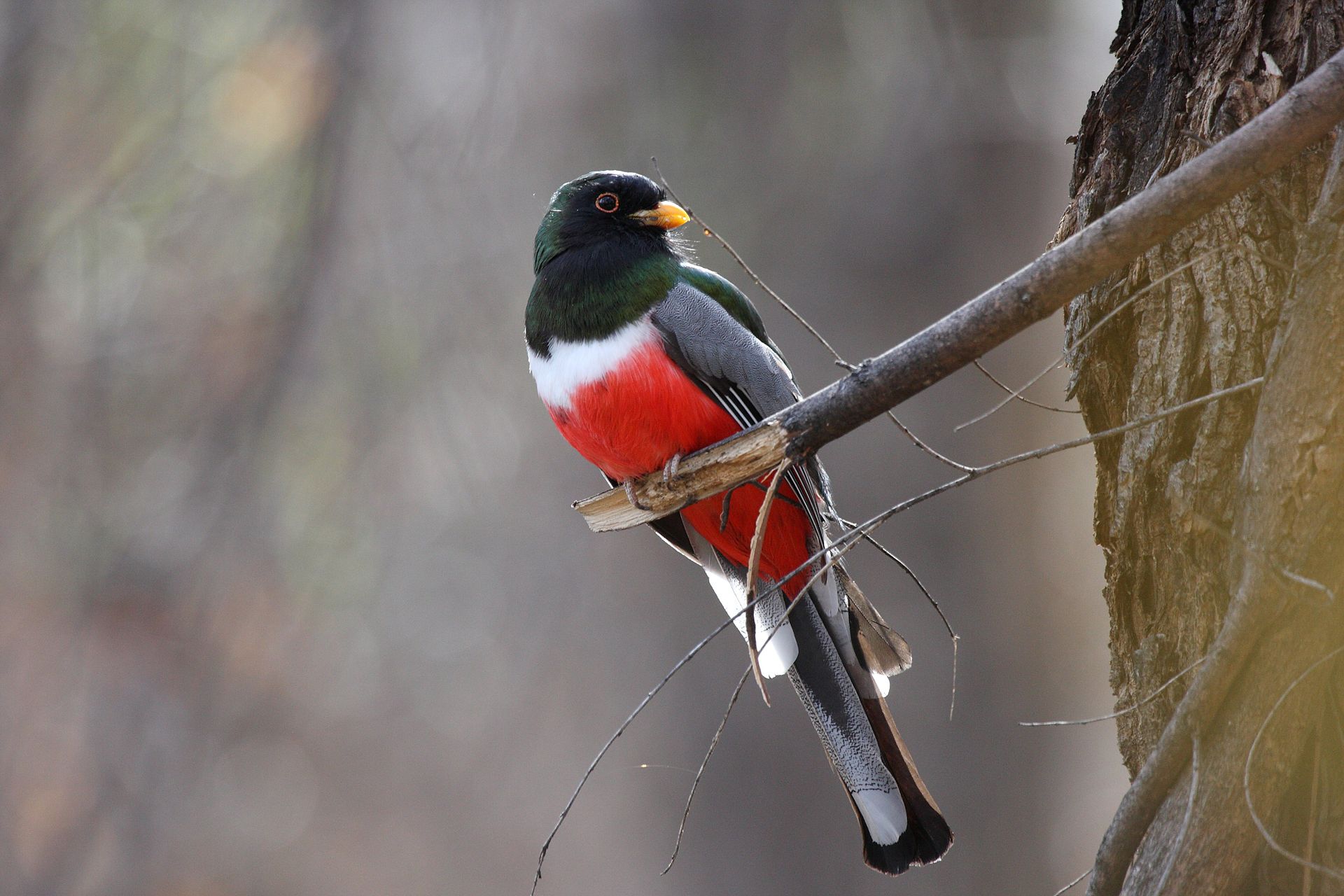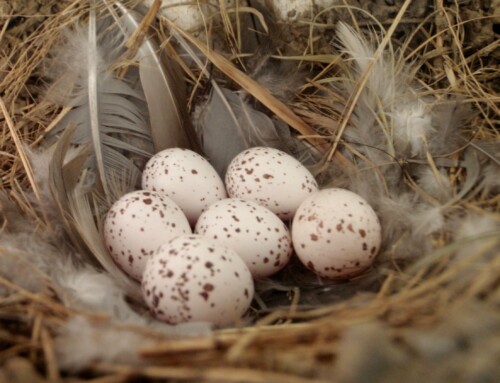LINKED PAPER
Rapid Laurasian diversification of a pantropical bird family during the Oligocene–Miocene transition. Oliveros, C. H., Anderson, M. J., Hosner, P. A., Mauck III, W. M., Sheldon, F. H., Cracraft, J. & Moyle, R. G. 2019. IBIS. DOI: 10.1111/ibi.12707. VIEW
Trogons are residents of tropical forests worldwide. This colorful bird family (Trogonidae) contains 39 species in seven genera. The African genus Apaloderma contains three species, while southeast Asia houses twelve species, divided over the genera Harpactes and Apalharpactes. The greatest trogon diversity – 24 species representing four genera – can be found in the Neotropics, the biogeographical region that includes the tropical section of Central America and the whole of South America. This widespread distribution raises an interesting question: where did the trogons originate?
Three scenarios
Like any good detective story, resolving a mystery requires several lines of evidence. In this case, ornithologists rely on two sources for clues: the evolutionary tree of the trogon family and the fossil record. Espinosa de los Monteros (1998) used two genes to reconstruct the evolutionary history of trogons and uncovered African species as the oldest lineage. Together with the fact that several European trogon fossils have been found in proximity of the African continent, he proposed that trogons originated in Africa. However, a second molecular study, based on two other genes, found that trogons from the New World represent the oldest lineage (Moyle 2005). Perhaps the trogons originated in the Neotropics? Recently, the situation has become even more complicated. The discovery of more trogon fossils in Europe adds a third scenario to the list (Mayr 2009). Possibly, trogons originated on the Northern Hemisphere and later spread to the southern latitudes when the climate changed.
Ultraconserved elements
To figure out which of these three scenarios explains the origin of trogons, scientists turned to ultraconserved elements (UCEs). These conserved DNA sequences are found in distantly related animal genomes and are probably involved in controlling gene expression (Bejerano et al. 2004). Their slow evolution can be used to probe evolutionary relationships in the distant past (McCormack et al. 2013). Analyses of thousands of these UCEs uncovered three trogon lineages (Africa, Asia and the Neotropics) and showed that they originated rapidly – geologically speaking – about 23 million years ago. The African trogons represented the oldest lineage.
Figure 1 The evolutionary history of the trogon family (Trogonidae). The different geographical regions represent distinct lineages: Africa (red), Asia (orange) and the Neotropics (blue). The African lineage is the oldest one. This family originated about 23 million years ago at the transition of Oligocene and Miocene.
But this result does not necessarily mean that Africa is the birthplace of trogons. It only provides one piece of the puzzle. Next, the researchers turned to the fossil record and investigated how the distribution of trogons changed over millions of years. These analyses indicated that Eurasia is the most likely site of origin for these birds. The ancestors of present-day trogons were probably distributed across Laurasia (i.e. Eurasia and North America). During the transition from the Oligocene to the Miocene, about 23 million years ago, the climate cooled, forcing the trogons to move to tropical forests in the southern latitudes of the Neotropics, Africa and Asia. There, they thrived while their relatives disappeared from the Northern Hemisphere, culminating in the widespread distribution we observe today.
References
Bejerano, G., Pheasant, M., Makunin, I., Stephen, S., Kent, W.J., Mattick, J.S. & Haussler, D. 2004. Ultraconserved Elements in the Human Genome. Science 304: 1321-1325. VIEW
Espinosa de los Monteros, A. 1998. Phylogenetic Relationships among the Trogons. Auk 115: 937-954. VIEW
Mayr, G. 2009. A well-preserved second trogon skeleton (Aves, Trogonidae) from the Middle Eocene of Messel, Germany. Palaeobiodiversity and Palaeoenvironments 89: 1-6. VIEW
McCormack, J. E., Harvey, M. G., Faircloth, B. C., Crawford, N. G., Glenn, T. C., & Brumfield, R. T. 2013. A phylogeny of birds based on over 1,500 loci collected by target enrichment and high-throughput sequencing. PloS one 8: e54848. VIEW
Moyle, R. G. 2005. Phylogeny and biogeographical history of Trogoniformes, a pantropical bird order. Biological Journal of the Linnean Society 84: 725–738. VIEW
Image credits
Featured image: Elegant Trogon Trogon elegans | Dominic Sherony | CC BY-SA 2.0 Flickr






